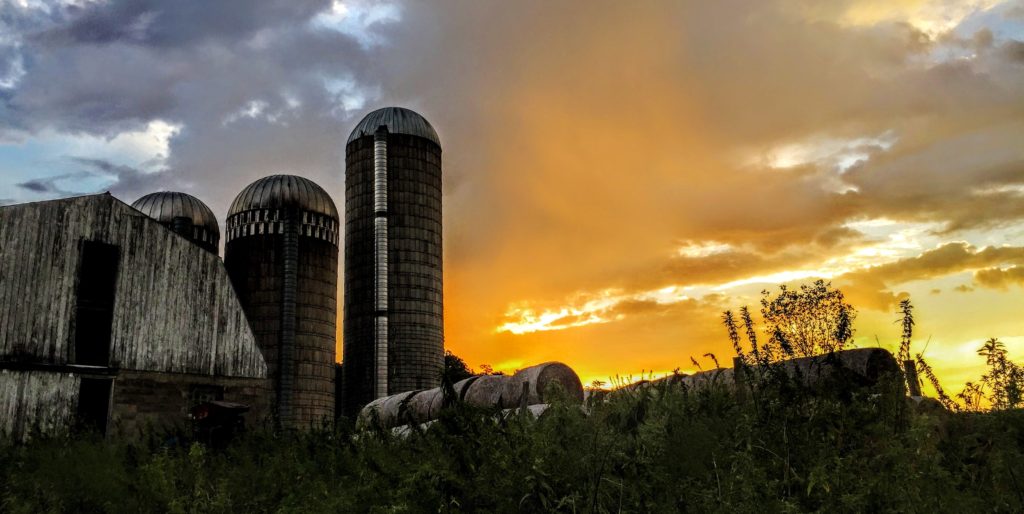Back Home by Chris Hardie
- Download column
- Download the photos that accompany this story
- Chris Hardie’s headshot
It was the last time dairy cows were milked on our farm.
It was August 2000 and my parents were selling their herd. What began in 1970 with a mixed-breed collection of 30 cows had grown into a herd of 65 almost-all-registered Holsteins. Along with the careful breeding program came improvements in milk production and the installation of a pipeline in 1986.

I came to the farm that day to help with the sale. We moved cows from the barn into the sale ring. I watched as years of quality genetics were sold at bargain prices.
It was late afternoon; we milked a few of the cows before they were loaded onto the trailers. One more time I heard the familiar hum of the vacuum pump. One last time I watched milk flow through the glass jar in the milkhouse into the bulk tank.
With only a few cows to milk, the barn was eerily quiet. The milking units were cleaned. The pump was shut down. A silent sadness hung over the valley.
My parent’s decision to sell their cows was strongly connected to their desire to retire from milking. It was difficult to see 75 years of farming tradition end – tradition that dated back to my great-grandfather. But it was also the right decision. Neither my brother nor I had an interest in being dairy farmers.
The loss of dairy farms in Wisconsin has been going on for decades. When my great-grandfather was milking cows in 1930, there were 167,000 dairy farms in the state.
When my parents sold their herd in 2000, Wisconsin had dipped to less than 25,000 herds. In 2017 there were 9,100 herds. Almost 700 dairy farmers quit the business in 2018. As of Jan. 1, 2019, there were 8,110 dairy herds left. We’re now at less than 8,000.
A big part of the problem is that dairy farmers are too good at producing milk. In 1930 milk production was 11.2 billion pounds. In 2017 it was 30.3 billion. Herds have grown larger. We have too much milk.
Wisconsin’s agricultural legacy of family dairy farms is dying. Years of depressed milk prices are taking their toll. Farmers cannot take the financial and emotional stress of working long hours every day of the year knowing they’re going backward. And the political tariff war was estimated to cost dairy farmers $1 billion in 2018.
All business – and dairy farming is a business – goes through constant change. Markets change. Jobs go away. One need only look at the upheaval in the auto, steel and coal industry. When plants close, communities suffer.
Wisconsin families and our rural communities suffer when dairy farms go out of business. Feed stores, hardware stores, banks, grocery stores and schools feel it. The bigger farms can fill the milk-production void but cannot replace the local economic impact.
Recently there has been news that some counties are having a difficult time finding dairy farms willing to host dairy breakfasts. The annual June events are meant to be a celebration of our dairy industry. But it’s difficult to celebrate, and spend time and money to host, when times are as tough as these.
I wish I had solutions to our dairy crisis. Milk pricing is a complicated system with many moving parts. Smarter folks are working hard to save family farms.
But we can all buy more cheese, milk, butter and other dairy products. Our family farms need our support.
Wisconsin will never
be the same.
Chris Hardie spent more than 30 years as a reporter, editor



